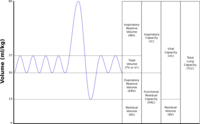
Photo from wikipedia
It is well recognized that poor muscle function and poor physical performance are strong predictors of clinically relevant adverse events in older people. Given the large number of approaches to… Click to show full abstract
It is well recognized that poor muscle function and poor physical performance are strong predictors of clinically relevant adverse events in older people. Given the large number of approaches to measure muscle function and physical performance, clinicians often struggle to choose a tool that is appropriate and validated for the population of older people they deal with. In this paper, an overview of different methods available and applicable in clinical settings is proposed. This paper is based on literature reviews performed by members of the European Society for Clinical and Economic Aspects of Osteoporosis and Osteoarthritis (ESCEO) working group on frailty and sarcopenia. Face-to-face meetings were organized afterwards where the whole group could amend and discuss the recommendations further. Several characteristics should be considered when choosing a tool: (1) purpose of the assessment (intervention, screening, diagnosis); (2) patient characteristics (population, settings, functional ability, etc.); (3) psychometric properties of the tool (test–retest reliability, inter-rater reliability, responsiveness, floor and ceiling effects, etc.); (4) applicability of the tool in clinical settings (overall cost, time required for the examination, level of training, equipment, patient acceptance, etc.); (5) prognostic reliability for relevant clinical outcomes. Based on these criteria and the available evidence, the expert group advises the use of grip strength to measure muscle strength and the use of 4-m gait speed or the Short Physical Performance Battery test to measure physical performance in daily practice. The tools proposed are relevant for the assessment of muscle weakness and physical performance. Subjects with low values should receive additional diagnostic workups to achieve a full diagnosis of the underlying condition responsible (sarcopenia, frailty or other).
Journal Title: Calcified Tissue International
Year Published: 2019
Link to full text (if available)
Share on Social Media: Sign Up to like & get
recommendations!